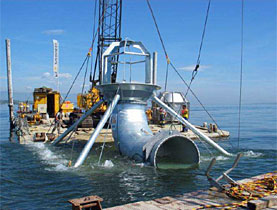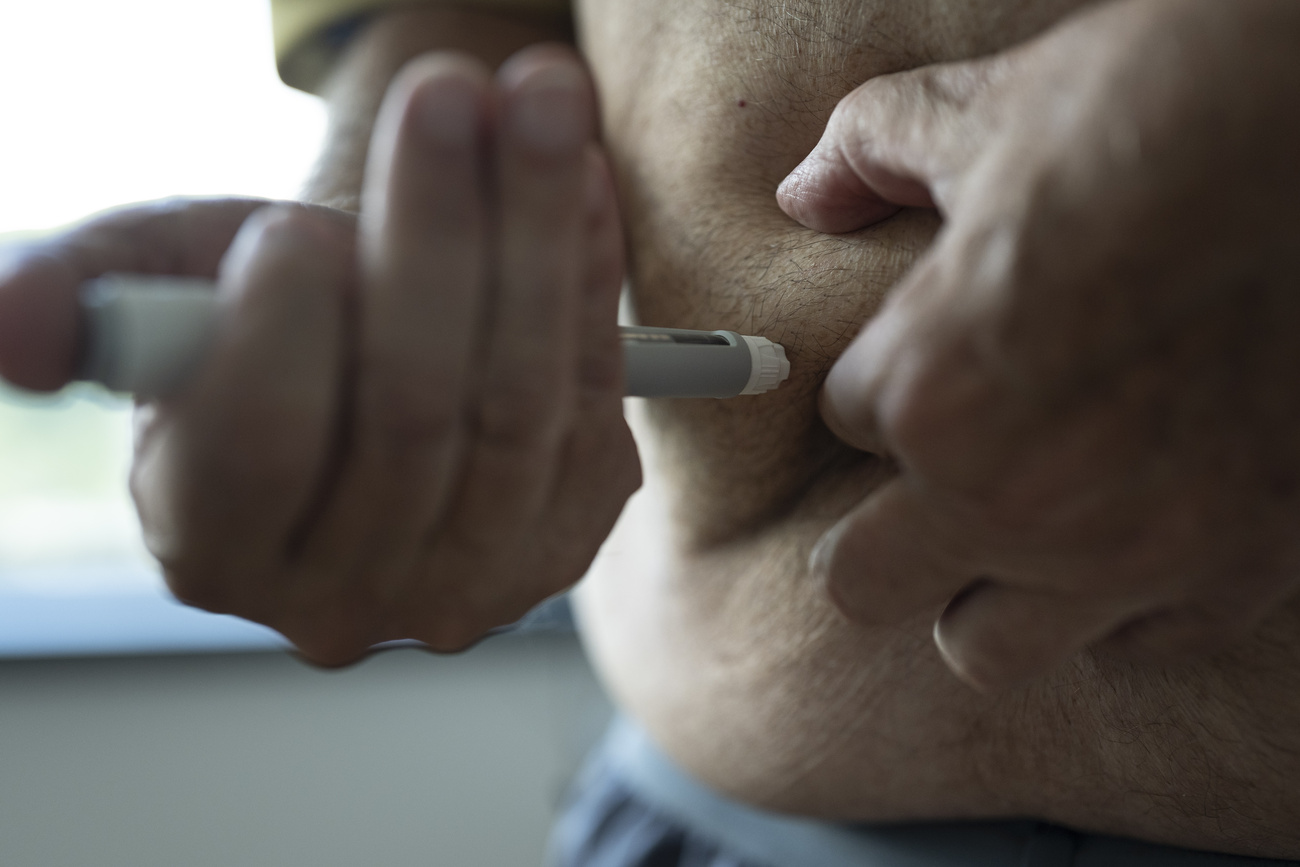
UN to use lake water to reduce carbon footprint

The United Nations in Geneva has signed up to an energy-saving project that uses lake water to cool and heat its buildings.
The thermal exchange network is expected to be in operation by the end of 2008 and will allow UN agencies and other international and non-governmental organisations to reduce carbon dioxide emissions and conserve water.
Anatoli Kondrachov, head of the UN’s Procurement and Contracts Unit, said the decision to sign on to the Genève-Lac Nations project was part of a broader strategy to save energy.
He told swissinfo that the move was chiefly political, but that it also made economic sense.
He added that the international body has also switched to using a more efficient gas power source, and that it is considering using electric or hybrid cars in Geneva.
“We are going further, further and further in our thinking,” he said.
The thermal exchange network and other environmental initiatives should allow the UN to cut 1,280 metric tons of CO2 per year. Presently, it emits 5,500 tons annually.
The UN European Headquarters in Geneva occupies 153,500 square metres of office space.
“To heat or cool the conference rooms and offices in the United Nations you need a lot of energy,” Kondrachov told journalists.
“A big radiator”
“The principle is simple; it’s like a big radiator,” explained Philippe Durr from the local power company Services Industriels de Genève (SIG).
Durr explained that the new installations would be implemented gradually in 2009.
The thermal exchange network uses water from Lake Geneva to cool and heat both new and existing buildings with a source of renewable sustainable energy.
Lake water is pumped from around 40 metres below the lake surface two kilometres from shore, piped inland and shared with the local network comprising ten organisations, a conference centre, school, hotel and several businesses just north of the city centre.
For air conditioning, heat exchangers integrated into existing systems cool the piped water. Heating is provided via modern, sophisticated heat pumps that produce hot water at 48 degrees Celsius, eliminating the need for energy-intensive boilers, burners, chimneys and fuel tanks.
The piped water can also be used to irrigate local parks and gardens, saving 400 million litres of drinking water per year
For Durr, the project is a perfect example of “sustainable development” in action.
There are similar projects in North America and Lausanne’s Federal Institute of Technology uses the same technology, but the new initiative in Geneva is the largest in Switzerland.
One downside, Durr noted, is that the network is limited in size and cannot be extended to the whole city.
“The pipe in the lake can only suck up so much water and that determines how much hot and cold water you can distribute. If we wanted to have more clients we’d have to change the whole system,” he said.
Savings
The UN estimates the network will allow it to save some SFr60,000 ($61,000) per year over a 16 year period, but the task of reducing its overall emissions remains a challenge.
“We have buildings that were constructed in the early 1930s and 1950s and we needed to renovate them. We are working hard to make them environmentally friendly, changing the facades and windows,” said Kondrachov.
Unfortunately the “old dinosaur” – the Palais des Nations building – cannot be heated using the low-temperature thermal exchange system. But the UN is taking the opportunity to replace its oil-fired heating system with cheaper, more environmentally friendly natural gas.
Around the world, the UN emits around 1 million metric tons of CO2 per year.
swissinfo, Simon Bradley in Geneva
The concept was initiated by the Geneva authorities in 2002-2003. The first section to heat and cool the pharmaceutical giant Merck Serono’s Geneva headquarters began in early 2006.
The project belongs to a long-term cantonal strategy which aims to reduce individual CO2 emissions by 17% by 2010 compared with 1990 levels, to control energy consumption, to encourage the use of natural gas and develop local heating networks, and to develop renewable energy sources.
The initiative is part of the European Commission’s Concerto Programme, which supports local community sustainable energy strategies.
The private-public project, which is currently in its construction phase, will cost around SFr35 million. The UN officially signed up to the project in January 2008.
Geneva is home to the headquarters of 22 international organisations, such as the World Health Organization, the World Trade Organization and International Committee of the Red Cross.
Together they employ around 35,000 people; in addition there are around 2,400 staff working for non-governmental organisations.
“International Geneva”, as it is known, is worth around SFr5 billion ($4 billion) a year to the canton.
Around 8,500 staff work for the United Nations family in Geneva, which is the largest concentration of UN personnel in the world.

In compliance with the JTI standards
More: SWI swissinfo.ch certified by the Journalism Trust Initiative































You can find an overview of ongoing debates with our journalists here . Please join us!
If you want to start a conversation about a topic raised in this article or want to report factual errors, email us at english@swissinfo.ch.